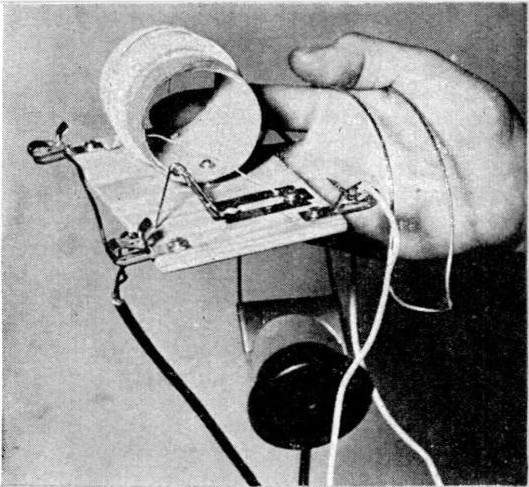Glancing into my sharps container, I was pondering what I could reuse the blades for. After all the mantra reduce-reuse-recycle makes a lot of sense. I have already reduced the amount of waste from my shaving by shifting to traditional wetshaving. I will recycle a lot of steel when my sharps container is full and I dump the metal. And while I could – in theory – reuse the blades by sharpening them, that is not terrible tempting.
But there is one other use for razor blades, common among soldiers in the past. I am, of course, talking about the so called fox-hole radio.

The fox-hole radio is a very basic – even crude – crystal radio. The major benefit of such a crude radio was that it did not contain any active components. Ordinary radios of the era contained vacuum tubes – this was long before transistors, not to mention integrated circuits – and a standard regenerative or superheterodyne receiver would be radiating it’s own radio waves, allowing the enemy to triangulate the users position.
A crystal radio, on the other hand, is unpowered and contain no fancy electronic components. The downsides is, as may be expected, that the radio will only pick up powerful transceivers. This was even more true of the ‘classic’ fox hole radio, where the so called crystal of the crystal radio was replaced by the oxide layer on a razor blade.
The circuit itself is pure simplicity. A coil of wire to act as an inductor. A head set or speaker. A razorblade and pencil lead to act as a schotty diode. A ground connection, An antenna.

All things that could be scrounged up easily, and carried in a pocket or rucksack when not in use. Similar radios were built and used in prisoner of war camps, and after the war in boy’s rooms across the globe.
The downside of a fox hole radio is that it will only pick up AM-signals, and only very strong or nearby transmitters. For those of living where there is only FM-signals – or DAB has taken over – there isn’t much to listen too these days. I still want to build one though.
